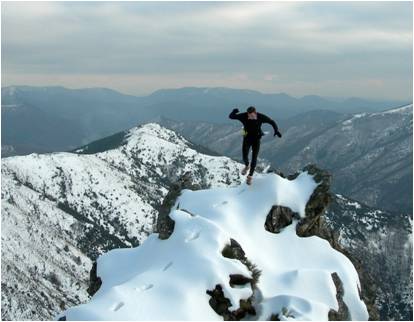 Optimal use of the Diaphragm → better shape and health:
Optimal use of the Diaphragm → better shape and health:
Ventilation (oxygenation, waste elimination)
+ Stabilisation of Posture.
In fact, the inspiratory (Diaphragm+++) and expiratory muscles (Transverse+++)
are linked with the Rachis and Perineum to support the core.
Example: arm movement is preceded by a synergic contraction of the Diaphragm + Transverse and Perineum.
Consequences of poor thoracic respiration:
Abdominal respiration = automatism from birth. However, growing up, we “must” flex our muscles, pull in our stomachs, and the stress of daily life and the effects of prolonged sitting block the diaphragm and provoke high and superficial thoracic breathing → Diaphragm and abdominal area atrophy, posture is disrupted, leading to contractions and back pain.
Respiration influences Posture and Emotions:
Stiffness of the Diaphragm → misalignments (neck, shoulders, and back). Conversely, neck, shoulder, and back pain limits inspiration. Therefore, the way we move and breathe influences our emotions: looking downwards, rolling the shoulders in and closing up, breathing is limited = a depressive attitude.
Negative emotions ← superficial thoracic respiration: slow = Sadness/ quick = Anger.
Ventral respiration → positive emotions: slow = calmness – confidence / quick = enthusiasm…
Thus, in order to be revitalized and find a solution → lift the head, look towards the sky or the horizon, open the chest while breathing deeply.
Benefits of Ventral Respiration:
Up to an additional 25% of O2, increasing cellular performance.
In the short term: management of the emotions by adapting the breathing: to calm down, focus, become enthusiastic…
In the long term: correction of posture, releases the stomach, chest and back = conserving energy.
Breathing in a balanced posture: when breathing in, calmly inflate the upper abdomen (solar plexus).
Buttocks slightly tightened (in order to properly position the pelvis and lumbar regions). Flexible chest, relaxed neck and shoulders. The difficulty is in thinking: a few seconds a day, then a few minutes until it becomes automatic in a few months.
Abdominal muscles!
It is the abdominal zone (Transverse, Oblique muscles) which is important, Not the “chocolate bar” (Rectus Abdominis): it retains proper posture, refines the waist, massages and supports the organs. These static muscles (endurance) are to be isometrically strengthened (contraction without visible movement). Example: Core Stabilization.
IDEAL everyday RESPIRATION:
Breathe calmly through the nose while inflating the solar plexus; calmly sigh through the nose.
A person at rest breathes 14x/min. Therefore, the optimal frequency for synchronizing our body rhythms (respiratory, cardiac, tissue-level) = 7 breaths/minute.
Exercises for abdominal breathing:
Breath in through the nose, inflating the upper abdomen as much as possible (when the abdomen inflates, it is not air which is coming in, but rather the Diaphragm which is dropping, opening up like an umbrella). Then, breathe out while pulling the abdomen in strongly (as if the belly button would touch the spine).
Focusing on breathing in (intake of O2 and Energy) has a revitalizing effect.
In order to relax and calm down, focus more on breathing out (expelling CO2 and waste products).
Alternations of Apneas after inhalation (alkalosis) and exhalation (acidosis) promote a hypnotic state conducive to visualization techniques.
Working on inhalation:
The Diaphragm is strengthened after inhalation: with 4 seconds of apnea.
1. On the back = the Posterior Diaphragm is strengthened.
More advanced: legs extended (Rectus Abdominis); then, more weight on the abdomen.
2. On the stomach = Anterior Diaphragm is strengthened (Resistance of the floor and the Rectus Abdominis).




Strengthening Exhalation = strengthening the abdominal area:
For warming up or with exertion: to Energize.
Exhalation is active, silent, slow, and peaceful: pull in the stomach while tightening the buttocks, then hold the breath for 4 seconds.
More difficult: on all fours (the increased Resistance of body weight). Core strengthening (increased resistance on the Rectus Abdominis).

Complete Abdominal-thoracic Respiration:
Abdominal Inhalation, then maximum thoracic inhalation. Exhalation empties the chest and then the abdomen: to energize / and between 2 exercises: to recuperate and focus.